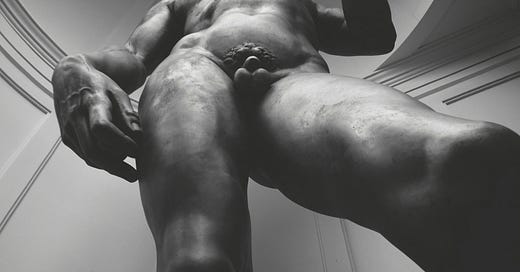There are some authors that haunt other writers. They appear around the time that you first get published. The identity of your particular spectre will be tied in some way to your work, but mostly to your race, gender, location, background. The imagination of critics sometimes stretches not to your actual writing, but to whichever famous author you can most easily be compared to. These ghosts linger around you at the start of your career, when no one has really got a sense of you yet but needs to pigeonhole you, and if you’re unlucky they’ll stick and be there forever. What I’m telling you is this: a hell of a lot of white female writers under 40 have found themselves haunted by Angela Carter.
I had my first comparison to Carter before I’d ever read a single one of her books, and certainly before I had developed enough skill for this to be anything other than wildly offensive to her. A lot of us go through a period of interest in folk stories, especially at the start of our careers, and especially if we’ve had an education that focused on the female element of such stories. They make sense, as a place to start. But the Carter comparison is slapped on then, and quickly sticks, no matter what your treatment of folk tales really is or how quickly you move on from it. All cheap comparisons, too eagerly made, eventually diminish the greater name; Angela Carter deserves more, I think, than just being the patron saint of unimaginative white female emerging writers.
Last week I read a wonderful write up of a new Brothers Grimm autobiography in the London Review of Books; the book is written by Ann Schmiesing, the review was by Colin Burrow. Of course, Carter was evoked in this article, as she always must be when discussing anything fairy-tale. As part of a rich discussion of the Grimms and their legacy, Burrow drew attention to Carter’s subversion of the original Bluebeard story in her book The Bloody Chamber, in which she has the final victim’s mother arrive to save her from her serial murderer husband. But the subversion was not quite Burrow’s focus:
The uneasy but repeated fascination with sexual humiliation in many of Carter’s versions of folk tales, for instance, is probably not quite the explicit content she would have wanted to put in them, and has sometimes made her readers squeamish… Why unlock the chamber you know is forbidden and which you suspect must be bloody unless some part of you wants to be hurt?
As my friend Camilla noted, this is a very odd point. It is strange to assume that anything a person puts in a book—a project in which they agonise over every word, every possible reading, every formulation of meaning—is there accidentally. But it is particularly strange to assume that Angela Carter wasn’t aware of the theme of sexual humiliation in her stories, because this is a writer who is intensely interested in the sharp edges of women’s experience of desire, of what lies underneath when you scratch through the female flesh of social niceties and obligation, of how sex in fiction can be used to hide social and cultural critique. She herself said that, in The Bloody Chamber, she was taking ‘the latent content of those traditional stories and using that; and the latent content is violently sexual.’ As Jenny Turner notes, in a 2016 LRB article, Carter sometimes referred to herself as a ‘moral pornographer’. She was interested in women’s fascination with sexual danger; she was interested in sadomasochism. In fact, in the same year that she brought out the book in question, The Bloody Chamber, she also brought out a book specifically around sadism. As in, literally about the work of the Marquis de Sade.
The Sadeian Woman and the Ideology of Pornography, published in the UK in 1979, is my favourite of the Carter books I’ve read, probably in part because it was, to me, so completely unexpected. Carter, like all dead female writers, is shorn of her radicalism in contemporary discourse, and so her name becomes blandly synonymous with retellings of folk tales rather than, for instance, with intense intellectual discussion of one of the most controversial writers in modern history, or with the fact that she used the money from her Somerset Maugham Award to leave her first husband and move to Japan.
Speaking on the BBC’s The Verb in 2012, Marina Warner—one of the scholars who has insisted on taking Carter’s work seriously throughout her career—described this book as being about ‘desire and its destruction, the self-immolation of women’. One of the first titles commissioned by the newly established feminist press Virago, the book stood out against the general feminist writing of the time, which was vehemently anti-pornography (as much of it is now). Carter knew that she was playing with fire even as she wrote it. Its publication managed to irritate radical feminist Andrea Dworkin, who dismissed it as a ‘pseudofeminist literary essay’; fellow anti-pornography feminist Susanne Kappeler similarly derided the book as failing to achieve a feminist analysis. Carter’s response, according to Edmund Gordon, was this:
If I can get up Susanne Kappeler’s nose, to say nothing of the Dworkin proboscis, then my living has not been in vain.
Keep reading with a 7-day free trial
Subscribe to general observations on eggs to keep reading this post and get 7 days of free access to the full post archives.



